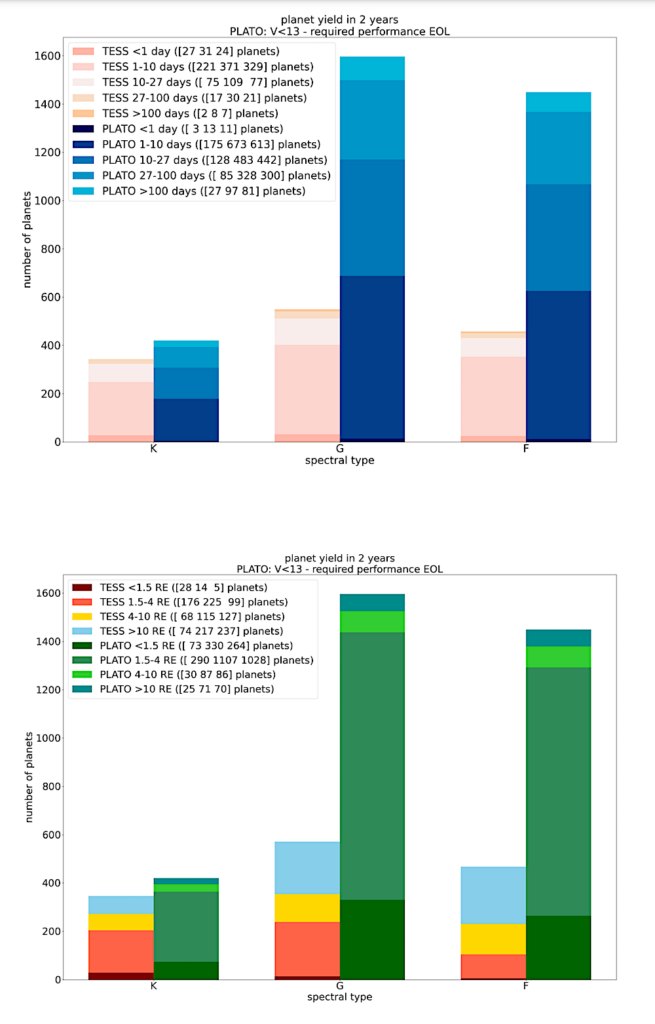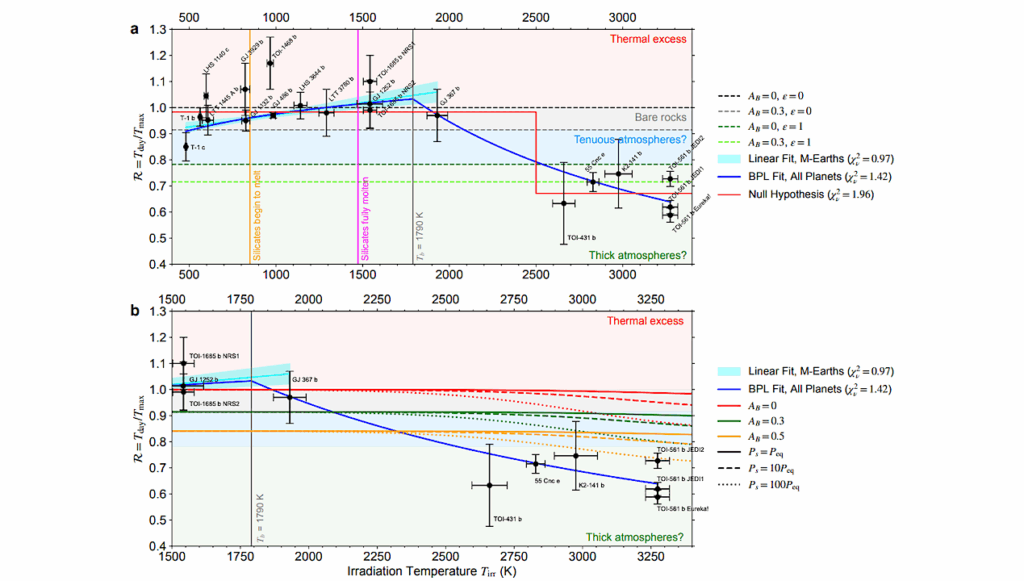The PLATO Mission

PLATO (PLAnetary Transits and Oscillations of stars) is ESA’s M3 mission designed to detect and characterise extrasolar planets and perform asteroseismic monitoring of a large number of stars.
PLATO will detect small planets (down to <2R_(Earth)) around bright stars (<11 mag), including terrestrial planets in the habitable zone of solar-like stars. With the complement of radial velocity observations from the ground, planets will be characterised for their radius, mass, and age with high accuracy (5 %, 10 %, 10 % for an Earth-Sun combination respectively).
PLATO will provide us with a large-scale catalogue of well-characterised small planets up to intermediate orbital periods, relevant for a meaningful comparison to planet formation theories and to better understand planet evolution. It will make possible comparative exoplanetology to place our Solar System planets in a broader context.
In parallel, PLATO will study (host) stars using asteroseismology, allowing us to determine the stellar properties with high accuracy, substantially enhancing our knowledge of stellar structure and evolution. The payload instrument consists of 26 cameras with 12cm aperture each. For at least four years, the mission will perform high-precision photometric measurements.
Here we review the science objectives, present PLATO’s target samples and fields, provide an overview of expected core science performance as well as a description of the instrument and the mission profile at the beginning of the serial production of the flight cameras. PLATO is scheduled for a launch date end 2026. This overview therefore provides a summary of the mission to the community in preparation of the upcoming operational phases.

Spectral type distribution for TESS Object of Interest (TOI) host stars compared with our expectations for PLATO. The number of planet detections for each spectral type (K, G, and F) is plotted as histogram. The values for TESS are taken from Guerrero et al (2021, their Fig. 7) and correspond to all magnitudes. False-positive TOIs have been removed. For PLATO we have taken the stellar population from the PIC (Montalto et al, 2021), which in its current version does not include M or A stars (hence we do not show any counts for these spectral types). We have considered the end-of-life (EOL) performance as per requirements, which is a conservative approach. We compare the nominal mission of TESS (2 years) with half of the nominal mission for PLATO (2 years). The PLATO results for the nominal mission (4 years) are about a factor of 2 higher (2+2 scenario in Table 2). Top: breakdown in orbital periods; Bottom: Breakdown in planetary sizes. — astro-ph.IM
Heike Rauer, Conny Aerts, Juan Cabrera, Magali Deleuil, Anders Erikson, Laurent Gizon, Mariejo Goupil, Ana Heras, Jose Lorenzo-Alvarez, Filippo Marliani, Cesar Martin-Garcia, J. Miguel Mas-Hesse, Laurence O’Rourke, Hugh Osborn, Isabella Pagano, Giampaolo Piotto, Don Pollacco, Roberto Ragazzoni, Gavin Ramsay, Stéphane Udry, Thierry Appourchaux, Willy Benz, Alexis Brandeker, Manuel Güdel, Eduardo Janot-Pacheco, Petr Kabath, Hans Kjeldsen, Michiel Min, Nuno Santos, Alan Smith, Juan-Carlos Suarez, Stephanie C. Werner, Alessio Aboudan, Manuel Abreu, Lorena Acuña, Moritz Adams, Vardan Adibekyan, Laura Affer, François Agneray, Craig Agnor, Victor Aguirre Børsen-Koch, Saad Ahmed, Suzanne Aigrain, Ashraf Al-Bahlawan, M de los Angeles Alcacera Gil, Eleonora Alei, Silvia Alencar, Richard Alexander, Julia Alfonso-Garzón, Yann Alibert, Carlos Allende Prieto, Leonardo Almeida, Roi Alonso Sobrino, Giuseppe Altavilla, Christian Althaus, Luis Alonso Alvarez Trujillo, Anish Amarsi, Matthias Ammler-von Eiff, Eduardo Amôres, Laerte Andrade, Alexandros Antoniadis-Karnavas, Carlos António, Beatriz Aparicio del Moral, Matteo Appolloni, Claudio Arena, David Armstrong, Jose Aroca Aliaga, Martin Asplund, Jeroen Audenaert, Natalia Auricchio, Pedro Avelino, Ann Baeke, Kevin Baillié, Ana Balado, Andrea Balestra, Warrick Ball, Herve Ballans, Jerome Ballot, Caroline Barban, Gaële Barbary, Mauro Barbieri, Sebastià Barceló Forteza, Adrian Barker, Paul Barklem, Sydney Barnes, David Barrado Navascues, Oscar Barragan, Clément Baruteau, Sarbani Basu, Frederic Baudin, Philipp Baumeister, Daniel Bayliss, Michael Bazot, Paul G. Beck, Tim Bedding, Kevin Belkacem, Earl Bellinger, Serena Benatti, Othman Benomar, Diane Bérard et al. (726 additional authors not shown)
Subjects: Instrumentation and Methods for Astrophysics (astro-ph.IM); Earth and Planetary Astrophysics (astro-ph.EP); Solar and Stellar Astrophysics (astro-ph.SR)
Cite as: arXiv:2406.05447 [astro-ph.IM] (or arXiv:2406.05447v1 [astro-ph.IM] for this version)
Submission history
From: Heike Rauer
[v1] Sat, 8 Jun 2024 12:06:49 UTC (18,672 KB)
https://arxiv.org/abs/2406.05447
Astrobiology








